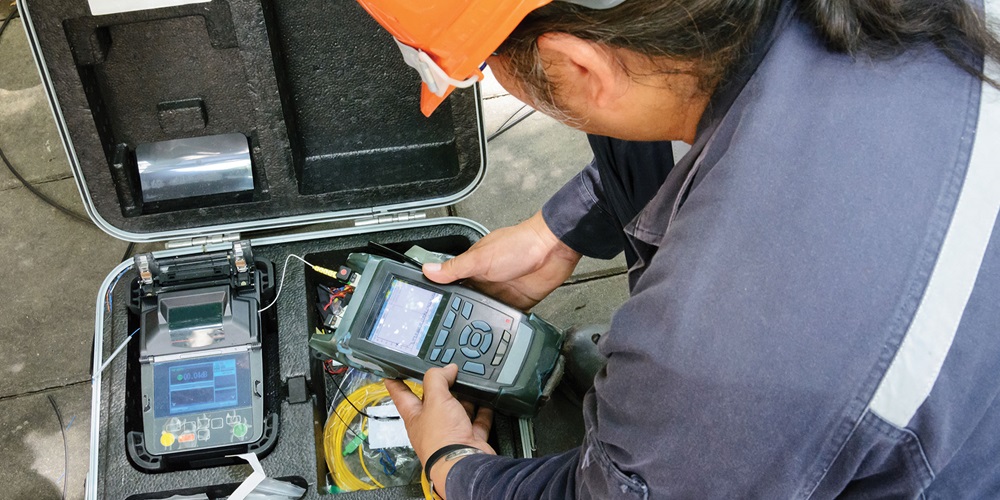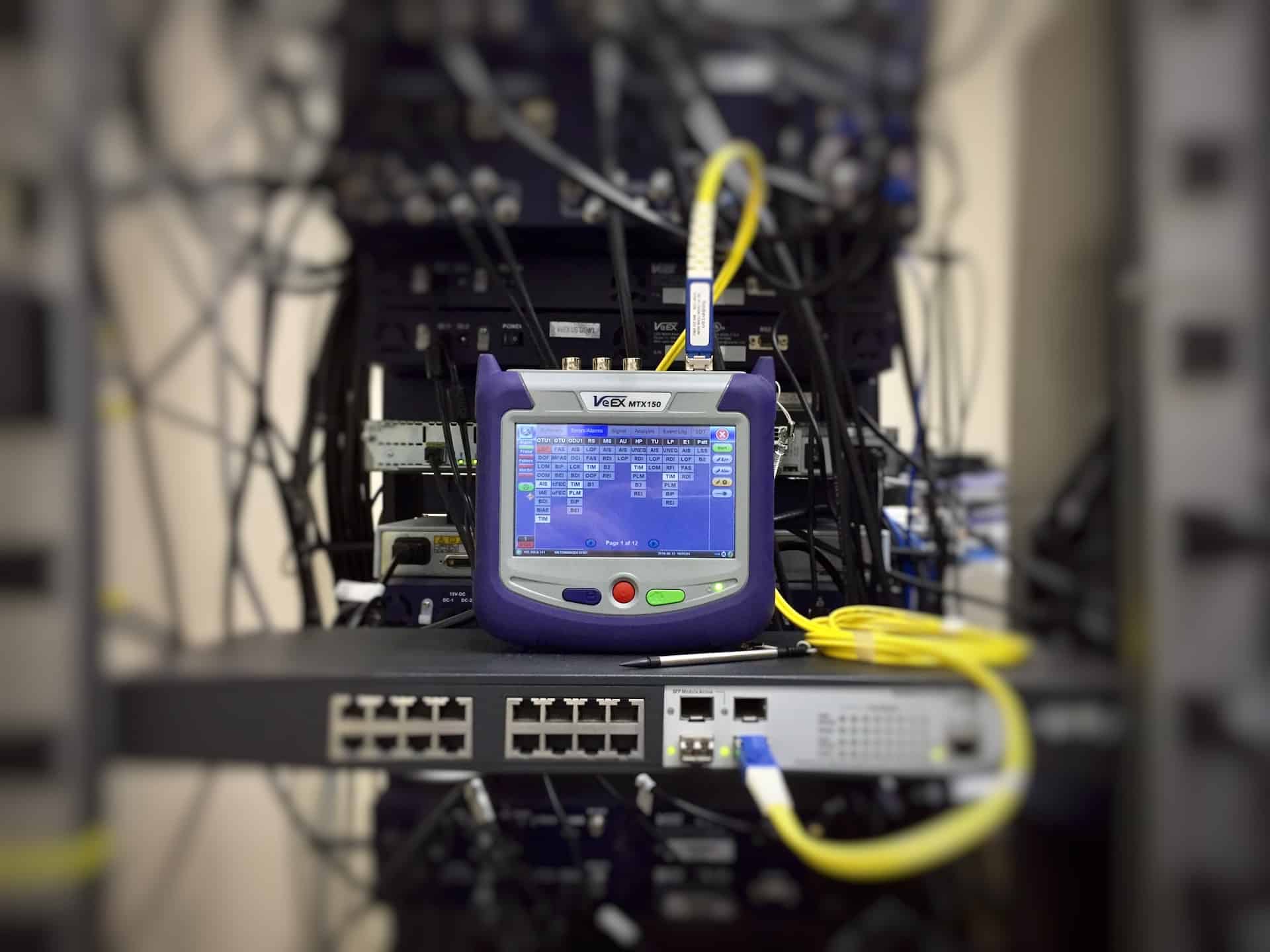A advanced optical fibre diameter analyser supports fibre manufacturing.
Exploring the Advantages of Optical Fibre Examining for Boosted Interaction Solutions
The importance of optical fibre screening in contemporary communication systems can not be overstated, as it acts as a structure for making certain network integrity and efficiency. Using advanced methodologies such as Optical Time-Domain Reflectometry (OTDR) and insertion loss evaluation, companies can not only identify faults yet additionally enhance their setups. This proactive testing strategy has extensive ramifications for signal top quality and functional efficiency, elevating the concern of how these methods contribute to long-lasting sustainability in an ever-evolving technological landscape. Understanding these characteristics is important for stakeholders aiming to maintain an one-upmanship.
Value of Optical Fiber Screening
The value of optical fibre testing can not be overemphasized in today's data-driven atmosphere. As companies increasingly count on high-speed information transmission for everyday procedures, the stability and performance of optical fiber networks are critical. Testing makes certain that these networks can sustain the substantial quantities of data produced and sent perfectly, cultivating efficient interaction and connectivity.
Optical fibre testing serves multiple essential features, including confirming installation high quality, recognizing potential mistakes, and determining general system efficiency. Regular testing can avoid pricey downtimes and service disturbances, enabling companies to maintain operational continuity. Furthermore, it helps in compliance with industry standards and policies, guaranteeing that fibre optic installations meet required specifications for safety and security and integrity.
In addition, screening can improve the durability of fiber optic systems. By proactively recognizing concerns such as signal loss, depletion, or connector failings, companies can resolve troubles prior to they intensify, hence expanding the life of their framework. In recap, optical fiber screening is not simply a technical demand however a critical financial investment that boosts network reliability, optimizes performance, and eventually supports the growth and efficiency of modern communication systems.
Secret Evaluating Methods

OTDR is a vital method used to recognize faults, action splice losses, and examine the overall integrity of a fiber optic web link. By sending a pulse of light down the fiber and examining the reflected light, service technicians can pinpoint locations of mistakes and review the network's efficiency over cross countries.
Insertion loss testing determines the amount of signal loss that occurs when light passes through a link or splice. This method is critical for validating that links fulfill given loss limits, which is necessary for maintaining optimum efficiency in communication systems.
Optical return loss testing evaluates the amount of light mirrored back towards the source as a result of flaws in the fiber or links. High return loss worths suggest far better performance and minimized signal degradation.
Together, these testing approaches supply an extensive evaluation of fibre optic networks, guaranteeing their reliability and capability in varied communication applications.
Effect on System Performance
Efficient optical fiber testing directly influences the overall performance of communication systems. By making sure the stability of fiber optic wires, screening recognizes potential mistakes such as attenuation, splice loss, and connector misalignment. These concerns can significantly deteriorate signal top quality, leading to disruptions and reduced information transmission speeds.

In addition, normal optical fibre testing adds to long-term system sustainability. It enables very early detection of deterioration, enabling timely upkeep and upgrades prior to major failures happen. This not only lengthens the life expectancy of the facilities but also makes certain that interaction systems continue to be competitive in terms of efficiency.
Cost-Effectiveness and Performance
Cost-effectiveness is a vital consideration in the deployment and upkeep of optical fibre networks. Executing robust optical fibre this page testing treatments can considerably lower operational expenses by recognizing issues before they intensify right into major issues. optical fibre diameter analyser. By finding mistakes, attenuation, and other performance limitations early, companies can avoid expensive repair services and downtime, which can interfere with solutions and lead to profits loss
In addition, reliable testing methods improve the setup process, allowing professionals to function better. This equates to decrease work expenses and faster job completion times. Advanced testing tools, such as Optical Time Domain Name Reflectometers (OTDRs), allows an accurate analysis of fibre top quality, making certain that just optimal products are utilized, thus decreasing waste.
Routine testing additionally adds to much better resource allowance. By comprehending the network's performance, companies can make informed choices regarding upgrades and growths, ensuring that financial investments are made where they are most required. In summary, optical fibre testing improves cost-effectiveness and efficiency, sustaining the long-lasting sustainability and competitiveness of interaction systems in an increasingly requiring market.
Guaranteeing Long-Term Integrity
Executing strenuous optical fibre screening not only improves cost financial savings and operational effectiveness but additionally plays an essential role in making sure the long-term dependability of communication networks. Constant testing techniques, including depletion and data transfer analyses, assistance identify possible degradation in fiber performance prior to it results in solution disruptions.
By using advanced screening methodologies, network drivers can pinpoint faults or weak points in the fiber infrastructure, enabling prompt removal. This aggressive approach lessens downtime, ensuring that communication systems continue to be functional and reliable. Routine screening contributes to the development of a much more durable network, as drivers can adapt and maximize their infrastructure based on real-time data insights.
In addition, guaranteeing compliance with sector requirements via optical fiber testing reinforces the quality and integrity of the entire interaction system. This adherence not only strengthens self-confidence amongst stakeholders but also straightens with regulatory demands, which are progressively strict.
Verdict
To conclude, optical fibre testing functions as a basic part in enhancing communication systems. By employing different screening techniques, such as OTDR and insertion loss evaluations, networks can accomplish optimum performance and reliability. The proactive identification of mistakes not only improves signal quality yet additionally reduces downtime, ultimately contributing to cost-effectiveness and functional effectiveness. Adherence to market standards why not check here fosters stakeholder self-confidence, guaranteeing the long-term sustainability of interaction infrastructures in a significantly data-driven landscape.